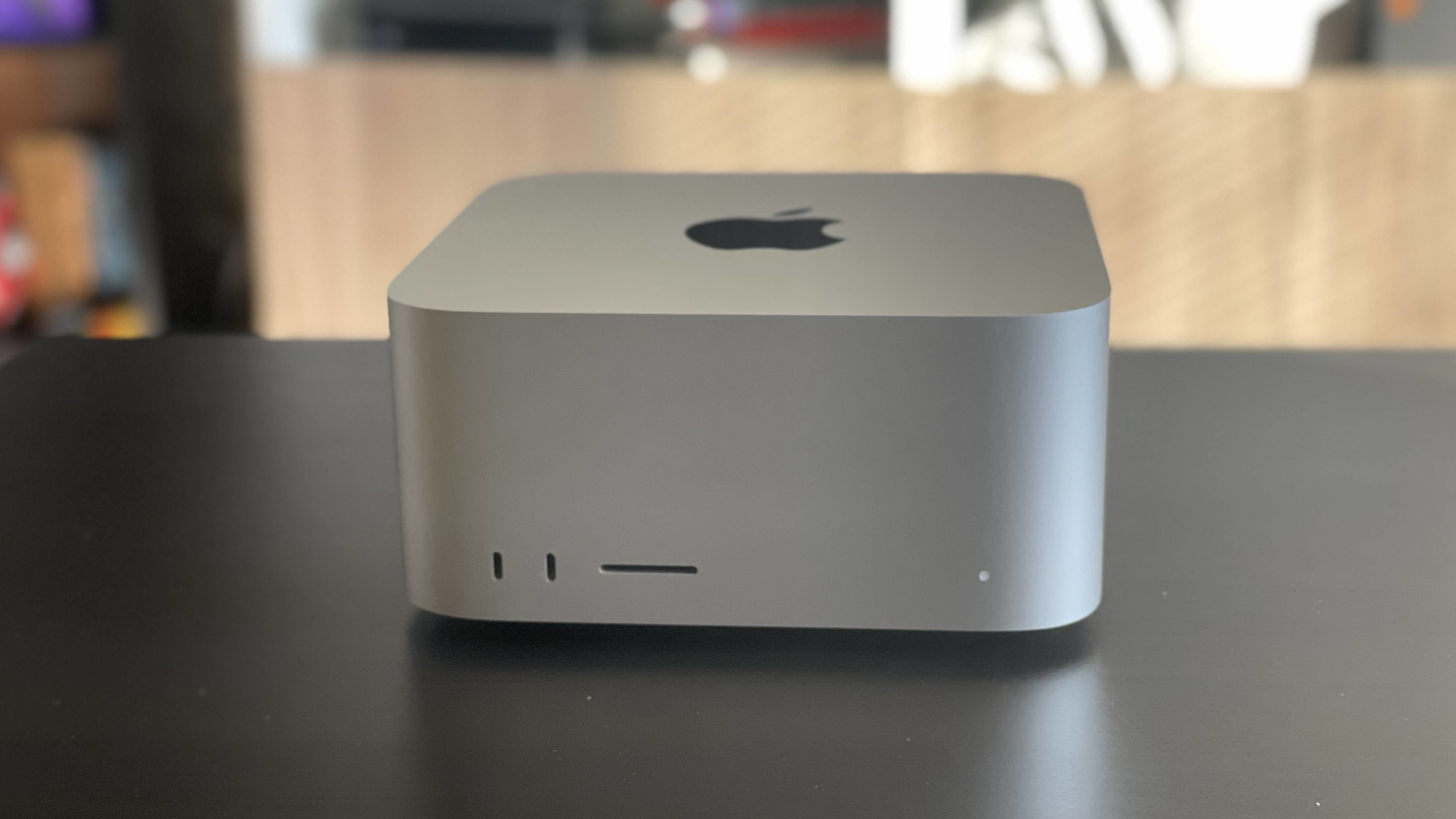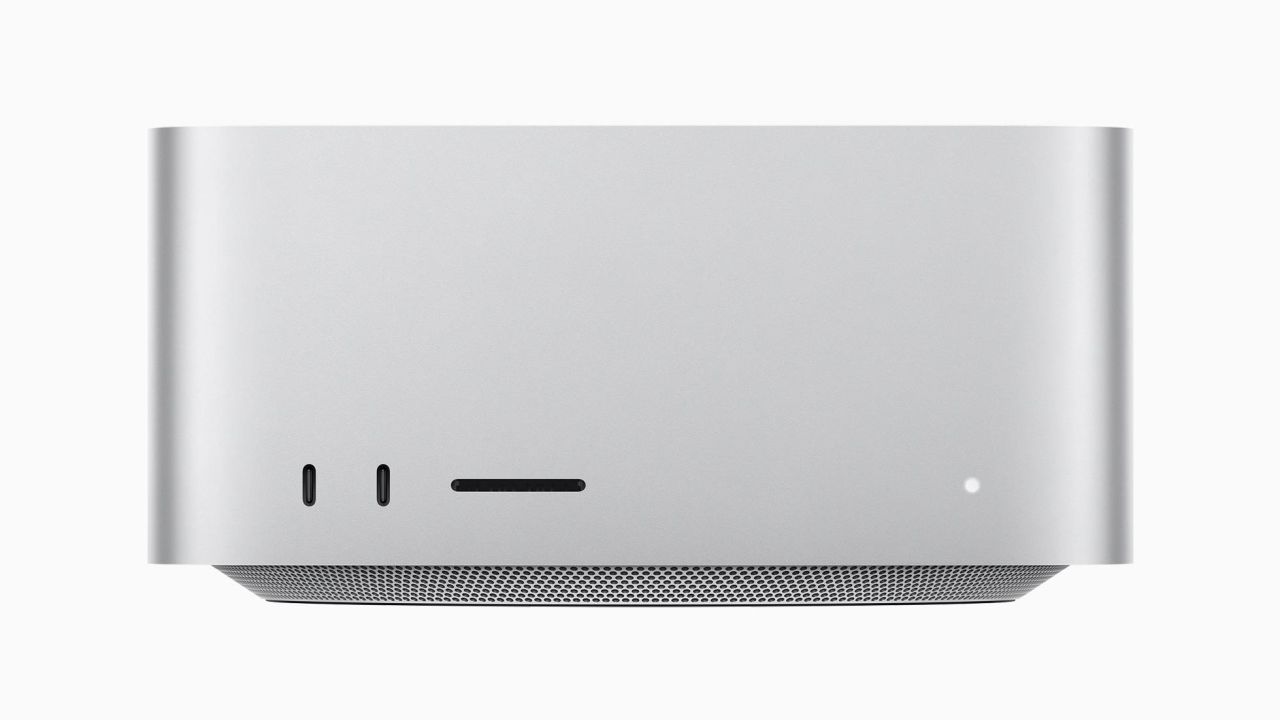The Mac Studio is easy to forget about, and I mean that in a good way. Sure, Apple’s new desktop is one of the fastest computers I’ve ever tested, but it packs all of that power into a compact, clean design that’s been sitting discreetly under my monitor.
That combination of big performance within a not-so-big box makes the Studio very compelling, especially for creatives who need lots of video, graphics or music production muscle but don’t have a ton of desk space. But you’ll also have to pay up for the privilege, with a starting price of $1,999 that can quickly balloon to thousands more — especially if you want Apple’s extra-blazing new M1 Ultra processor.
There’s also the fact that Apple’s standard M1 Macs are still ridiculously powerful for the average person’s workload, which raises the question: Who should actually buy a Mac Studio? I spent the past week with Apple’s tiny but beastly desktop to figure that out.
The who, what and how
Who it’s for: The Mac Studio is for creative professionals and ‘prosumers’ who want the best processing performance you can find. It’s also ideal for folks who want tons of power but don’t have a lot of space, thanks to a compact design you can sneak under just about any monitor.
What you need to know: The Mac Studio offers your choice of Apple’s fastest processors — the M1 Max and M1 Ultra — and in our testing, delivers some of the best overall speeds we’ve seen from any computer. It packs all of this muscle into a small cube that manages to offer a good amount of connectivity options, including a plethora of Thunderbolt 4 ports and two USB-A ports.
How it compares: The Studio is the middle child of Apple’s dedicated desktop lineup, offering more power and connectivity than the $699 Mac Mini but not quite as many high-end configuration options as the massive Mac Pro that starts at $5,999. Our Mac Studio with M1 Max outperformed nearly every Mac and PC we’ve tested in terms of general processing power, only falling behind dedicated gaming desktops when it came to graphics.
A compact design you can sneak into any setup
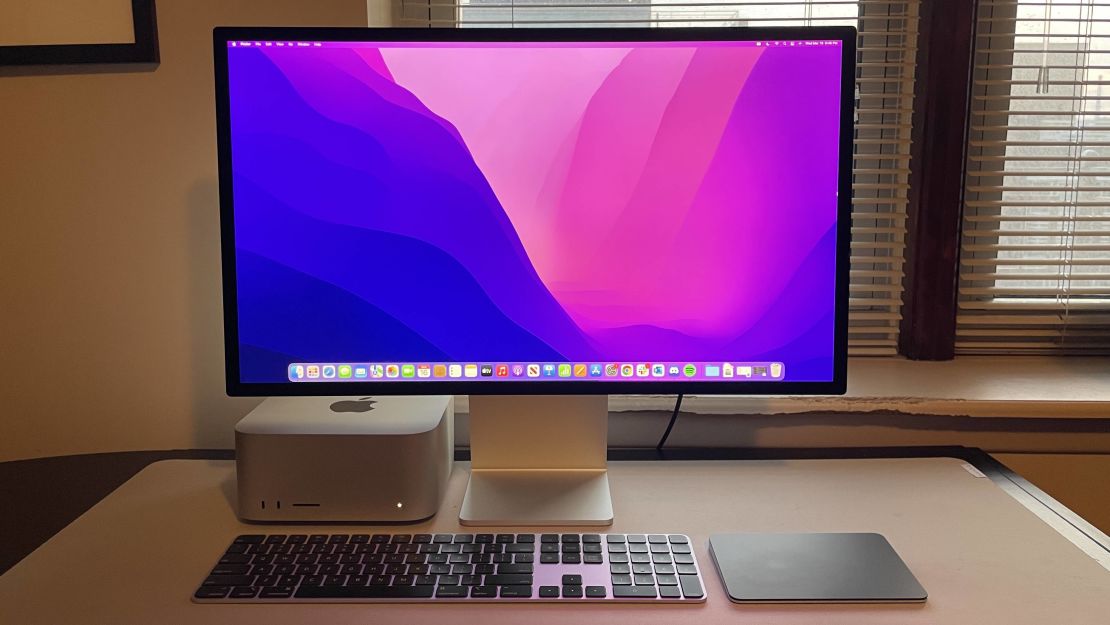
Compact, curvy and unassuming, the Mac Studio is basically a chunkier Mac Mini — and that’s a good thing. Apple’s new desktop computer sits at just 7.7 inches wide and 3.7 inches tall, sporting a sleek, all-silver look that’s ideal for even the most cramped work area. I currently have it tucked under an Apple Studio Display alongside a Magic Keyboard and Magic Trackpad, which all combine to create a clean, minimalist workspace that still leaves plenty of room on my desk.
Despite its small size, the Mac Studio provides plenty of useful ports for accessories and displays. You get two USB-C ports up front, as well as an SDXC card slot for quickly accessing photos and videos from a camera. In the back, you’ll find four Thunderbolt 4 ports (the latest standard for powering high-resolution displays and enabling fast data transfers), an Ethernet port for wired internet, an HDMI port for traditional monitors and TVs, a headphone jack and — most notably — two USB-A ports.
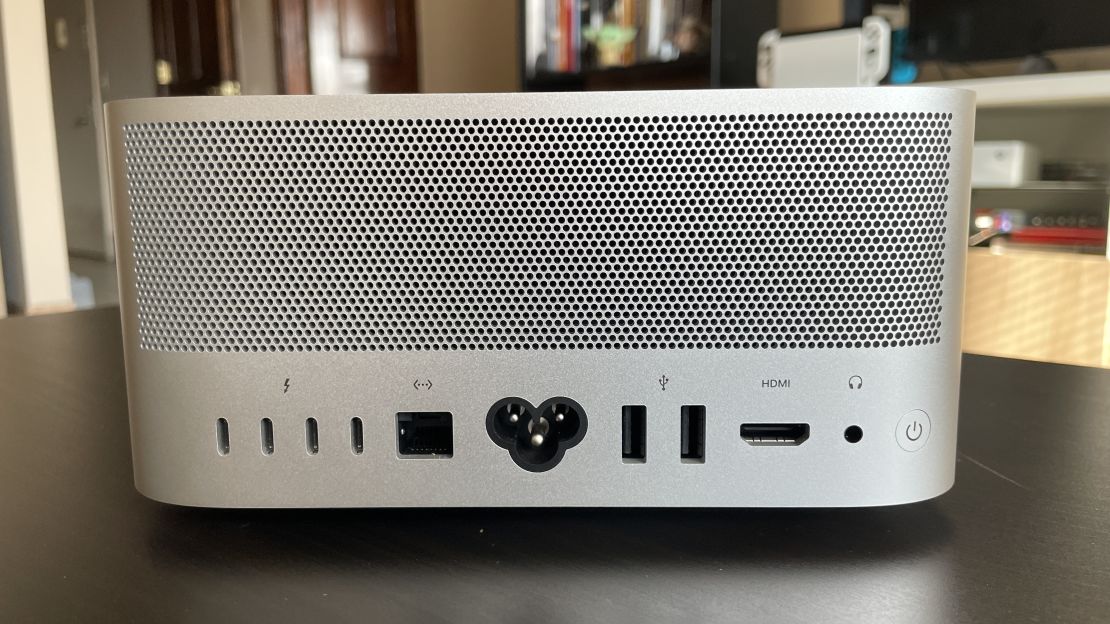
I’m especially thrilled about the inclusion of USB-A, as I still rely on plenty of accessories that use the old connection standard. Whereas the latest 24-inch iMac and 14-inch MacBook Pro forced me to pull out a USB-C adapter for connecting my webcam or music interface, the Studio simply lets me plug-and-play with those peripherals. I’d love it if the power button was up front to make booting up a little easier, but overall, the Studio is a well-designed compact PC that does more than the Mac Mini without taking up much additional space.
The best performance we’ve ever seen on a Mac
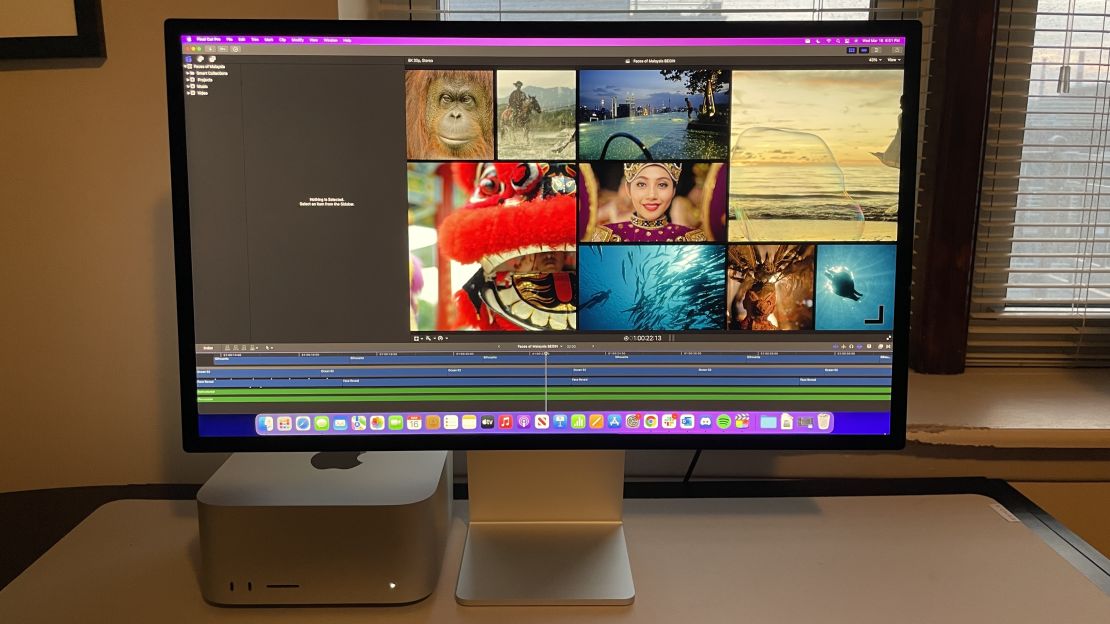
Don’t let its tiny design fool you — the Mac Studio is one of the most powerful Macs ever. It offers your choice of Apple’s two highest-end processors: the M1 Max, which debuted on the 2021 MacBook Pros, and the new M1 Ultra, which is effectively two M1 Max chips fused together and promises to run circles around just about every Mac available. We haven’t gotten a chance to test an M1 Ultra Mac Studio just yet, but even my review unit — which packs a 32-core M1 Max chip and 64GB of RAM — has pumped out some of the most impressive performance I’ve ever seen.
The Mac Studio allowed me to smoothly swim through a massive Final Cut Studio project, playing back and scrolling between nine simultaneous 8K video streams without a single stutter. And when it came time to export the whole thing down to a single 4K video, the Studio took just 22 seconds to finish the job. Apple’s desktop was similarly quick when it came to jamming out in Ableton Live, exporting an intricate 16-track electronic music project in just 24 seconds.
Whether I was playing around with a detailed 3D model in Horos Mobile or rapidly swiping between 1,000 high-res photos in Adobe Lightroom to the point where it looked like I was playing back a movie, the Studio made working with advanced creative projects feel incredibly responsive and fluid. And here’s the most impressive part: Even when I had upwards of 16 apps open — including the aforementioned projects and no shortage of memory-hungry Chrome tabs — the Studio never slowed down, and remained whisper-quiet.
|
Processor/Graphics
|
Geekbench 5 (single-core)
|
Geekbench 5 (multi-core)
|
Shadow of the Tomb Raider (1080p)
|
Shadow of the Tomb Raider (4K)
|
|
|---|---|---|---|---|---|
| Mac Studio | Apple M1 Max (32-core) |
1,787 |
12,792 |
88 fps |
32 fps |
| MacBook Pro 14-inch | Apple M1 Pro |
1,768 |
12,463 |
47 fps |
N/A |
| iMac 24-inch | Apple M1 |
1,731 |
7,681 |
30 fps (900p) |
N/A |
| MSI Aegis RS | Intel Core i7-11700K; Nvidia RTX 3080 |
1,680 |
10,348 |
170 fps |
84 fps |
The Mac Studio’s blistering real-world performance was also reflected in our benchmark tests, where it beat nearly every PC we’ve tested. On Geekbench 5, which measures general performance, the Studio scored a very impressive 12,792. The only machine that’s come close to that in our testing is our 14-inch MacBook Pro with an M1 Pro chip (12,463), and it beats out even the most high-end gaming PCs with the latest Intel Core i7 chips by a significant margin. If you’re wondering how that compares to a machine with a standard M1 processor, the Mac Studio’s raw computing speed is about 40% faster than the latest 24-inch iMac.
This little box is no slouch when it comes to graphics, either. It handled the cinematic action of Shadow of the Tomb Raider at up to 88 frames per second (fps) at 1080p, and 32 fps at 4K. We consider at least 60 fps to be ideal for smooth, immersive gaming, and at least 30 fps for basic playability.

To put that number in perspective, the standard iM1 iMac struggled to run the game at 30 fps at a low 900p resolution. On the other end of the spectrum, most gaming PCs we’ve tested with Nvidia’s high-end RTX 3080 graphics card more than doubled the 1080p and 4K scores we saw on the Studio.
So while the Mac Studio with M1 Max isn’t quite on that level, it’s more than capable of pumping out high-quality gaming performance — which is especially impressive considering that it lacks a dedicated graphics card. We still wouldn’t recommend buying a Mac solely for gaming due to its relatively thin selection of titles compared to Windows, but the M1 Max chip will get you plenty of power for doing graphics work or hopping into the occasional Steam game.
Which Mac Studio is for you?

The Mac Studio’s performance will vary based on how you configure it, and there are lots of options for doing so. Apple’s desktop starts at $1,999 with an M1 Max processor (10-core CPU, 24-core GPU), 32GB of RAM and a 512GB SSD, but that price quickly balloons to thousands more once you start making upgrades.
To give you an idea of what an upgraded model looks like, my review unit packs an M1 Max with a faster 32-core GPU as well as 64GB of RAM and a much bigger 2TB SSD for storage, all of which costs $3,199.
You’ll have to pay at least $3,999 if you want the more powerful M1 Ultra processor (32-core CPU), which itself can be upgraded with an even beefier 64-core GPU for an extra $1,000. The M1 Ultra model is the only one to feature Thunderbolt 4 ports up front, and the only variation that lets you add up to 128GB of RAM for serious multitasking. Both versions of the Studio can be outfitted with up to 8TB of SSD storage, which will ensure that you will virtually never run out of space at the cost of a measly $2,200.
It’s also worth noting that you’ll have to provide your own mouse, keyboard and monitor for the Studio, whether you opt to get a Magic Keyboard and Magic Mouse or go with a cheaper third-party option. Still, even with all of those extras factored in, the Studio is much more attainable than the Mac Pro tower, which starts at $5,999 before you make any upgrades.
Bottom line

It’s very easy to say that the Mac Studio is the most powerful Mac ever, with more than enough muscle to get through just about any video editing, 3D rendering or music production workload. It’s a little harder to say who should actually buy one.
If all you care about is having a compact PC, you can get a Mac Mini starting at a much cheaper $699 — complete with a standard M1 processor that, while not as blistering as an M1 Max or Ultra, still runs circles around the average Windows computer. And if you prefer an all-in-one, the $1,299 24-inch iMac? offers a similarly great M1 experience complete with a gorgeous display, rich speakers and an included mouse and keyboard.
If you’re a true power user who wants a wide range of configuration options (and the flexibility to swap in new components over time), there’s also the more modular Mac Pro that starts at $5,999. However, we’d recommend waiting until Apple Silicon arrives on that desktop before buying one.
That leaves the Mac Studio as a premium middle ground for creatives and prosumers who want future-proofed performance within a box that will barely make a dent in your setup. It’s a steep investment, but one that offers a lot for those who truly need the muscle.
| Processor | Apple M1 Mac (24-core or 32-core GPU) |
Apple M1 Ultra (48-core or 64-core GPU) |
|---|---|---|
| Memory | 32GB or 64GB |
64GB or 128GB |
| Storage | 512GB, 1TB, 2TB, 4TB or 8TB |
1TB, 2TB, 4TB or 8TB |
| Ports | USB-C (2), SDXC, Thunderbolt 4 (4), USB-A (2), HDMI, 10Gb Ethernet, 3.5mm headphone jack |
Thunderbolt 4 (6), SDXC, USB-A (2), HDMI, 10Gb Ethernet, 3.5mm headphone jack |
| Size and weight | 7.7 x 7.7 x 3.7 inches, 5.9 pounds |
7.7 x 7.7 x 3.7 inches, 7.9 pounds |
| Price | From $1,199.99 | From $3,999.99 |

